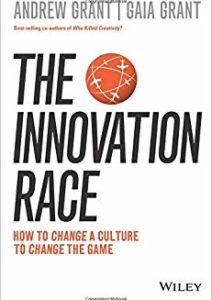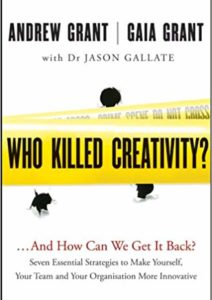Business culture is something fundamental to an organization, or a group of people within that organization. Companies talk a lot about “business culture” and attempt to create cultural innovations that drive the organization forward. However, it’s not always done correctly, and there is such a thing as too much innovation. Andrew Grant, interviewed by John Golden, discusses more.
This expert sales interview explores business culture:
- Explaining culture
- Defining exploration culture
- Understanding the paradox theory
- The preservation theory
What is Culture?
Underlying every group, whether it is a country, a company, a marriage, a family, or your surfing friends, is a culture. Sometimes this culture can be a bit gimmicky, with everyone in the organization wearing Hawaiian shirts or the color red, and the culture can also be abused. But ultimately, culture is the glue that holds the group together. Business culture dictates your daily decisions. A value statement will dictate if you put money over people, your brand over your reputation, and so forth. Culture is so influential to a company, and whether they move forward successfully or unsuccessfully. It is a set of values, either unwritten or explicitly written that people will adhere to. Sometimes these values are organic, that a group has developed over time but has never written them down or analyzed them. Or, they could be very developed, well studied, documented, and dogmatic in approach.
Exploration Culture:
In this day in age, we often associate company innovation with the trendy silicon valley companies that preach exploration. Their culture is founded on things such as freedom, openness, group engagement, and flexibility. They are the key things that companies over the years have said are important, and have been integrated more and more into organizations as the trend continues. This is called an exploration culture. It is focused on continually exploring and pushing boundaries. This certainly is innovative, and some cultures have seen some success with this model. However, in this case, there is too much of a good thing.
The Paradox Theory
If you embrace the freedom, openness, group engagement, and flexibility too much, there is the potential for disaster. Too much freedom leads to chaos. Too much openness leads to lack of direction. Too much group engagement leads to blind conformity. Too much flexibility leads to a lack of reality. “The typical research that comes out of the innovations of the exploration model is that yes, let’s all be explored and run down that side of the road, but there is a danger of the going off the runway and into the danger zone,” said Grant. If we were to embrace that more contemporary research on exploration, you might end up with an innovative company, sure, but it won’t be sustainable.
The Preservation Theory:
There is a way to create an innovative, explorative culture that also promotes sustainability. “If you just go down the exploration side of the road, you’ll get fast innovation, but it won’t be sustainable,” said Grant. Instead, create a balance. Balance freedom with control. To balance out openness, use focus. Balance group engagement with the freedom to feel like an individual. To balance flexibility, we need stability. This is a preservation theory that allows for an organization to achieve innovation in a contained and controlled way to create a well-balanced culture.
For more information on how to create an innovative business culture, watch the full expert sales interview.
About our Host:
John is the Amazon bestselling author of Winning the Battle for Sales: Lessons on Closing Every Deal from the World’s Greatest Military Victories and Social Upheaval: How to Win at Social Selling. A globally acknowledged Sales & Marketing thought leader, speaker, and strategist. He is CSMO at Pipeliner CRM. In his spare time, John is an avid Martial Artist.
Pipeliner CRM empowers companies to sell with full creativity. Get your free trial of Pipeliner CRM now.











Comments